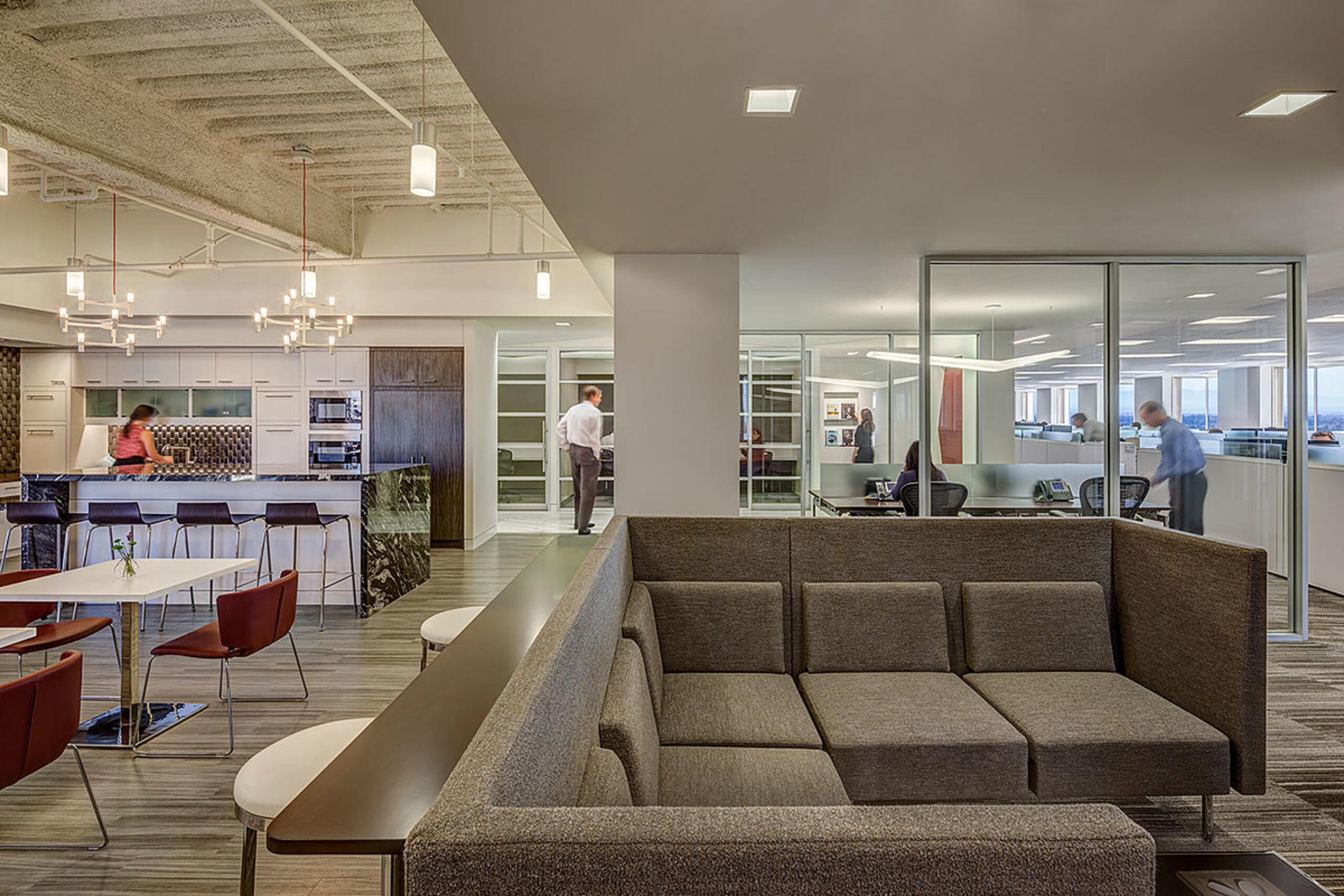Creating an Engaging Office: How Office Space Can Empower Employees and Bridge Generation Gaps

Collaborative or creative workspace has been a popular business trend, with an increasing number of employers and corporations understanding that their space speaks volumes about their organization and that a well thought out environment can create a competitive advantage. The stated advantages of a creative office, which can include increased collaboration and higher employee productivity, are attractive to many employers. However, as the war for talent intensifies and employees’ work styles and preferences change, office environments will need to move beyond encouraging teamwork and energy levels, and into encouraging authentic engagement.
Engaging office environments are developed with one goal in mind: driving team collaboration. The more positively connected employees are to their work, the more they are motivated to contribute back to a company’s business; these engaged employees are more likely to use their discretionary time at the office for the benefit of the company than those who are disengaged. Everything in an engaging office – from the location of personal workspace to the number and design of meeting spaces – is designed to optimize efficiency and create effective opportunities for collaboration.
Today’s office culture is much different than that of generations past. Instead of spending the majority of the day at their desks or sitting in private offices, employees now spend 60 to 70 percent of their time away from their personal workspace. As a result, employers looking to create efficiency in their businesses need to build an office environment that accommodates for a more mobile workforce. For example, when designing office space for Idea Hall, an Orange County-based branding, marketing and public relations agency, Hendy incorporated ample collaborative zones, including café high discussion tables and an open-concept kitchen, throughout the office to stimulate spontaneous interaction and brainstorming, while also maintaining necessary heads-down focus space for individual activities.
The rise of Millennials in the workforce has been an impetus in businesses moving toward an engaging office environment. For Millennials, connecting with other employees is one of the key ways that they exchange, process and absorb information. Millennials are drawn to highly functional workspaces, where they have the resources needed to complete their work at their fingertips.
To attract and retain smart and motivated talent, employers must offer space that meets the needs of the next generation of leadership, while accommodating the needs of the current, perhaps more mature workforce. Following a recent merger with another brokerage firm, Jones Lange LaSalle’s Orange County offices underwent a redesign to bridge the gap between the differing work styles of the merged groups and enable them to operate as a team. The Hendy team designed an open plan that advanced the team-oriented culture and created efficiencies in the organization, while remaining sensitive to the diverse and generational attributes of the team.
Even in companies where Millennials are not the decision makers, engaging Millennial team members is important, especially as the talent war heats up. As companies assess the environment that they are in, or the space that they would like to target as they grow, the capability of workspace to stimulate and enthuse Millennials is crucial.
Office environments are moving beyond just a location to house a business into a mechanism to help propel a business. As the war for talent intensifies and the work style preferences of team members continue to change, it will be imperative for businesses to adopt work environments that engage their people and also attract the best talent.